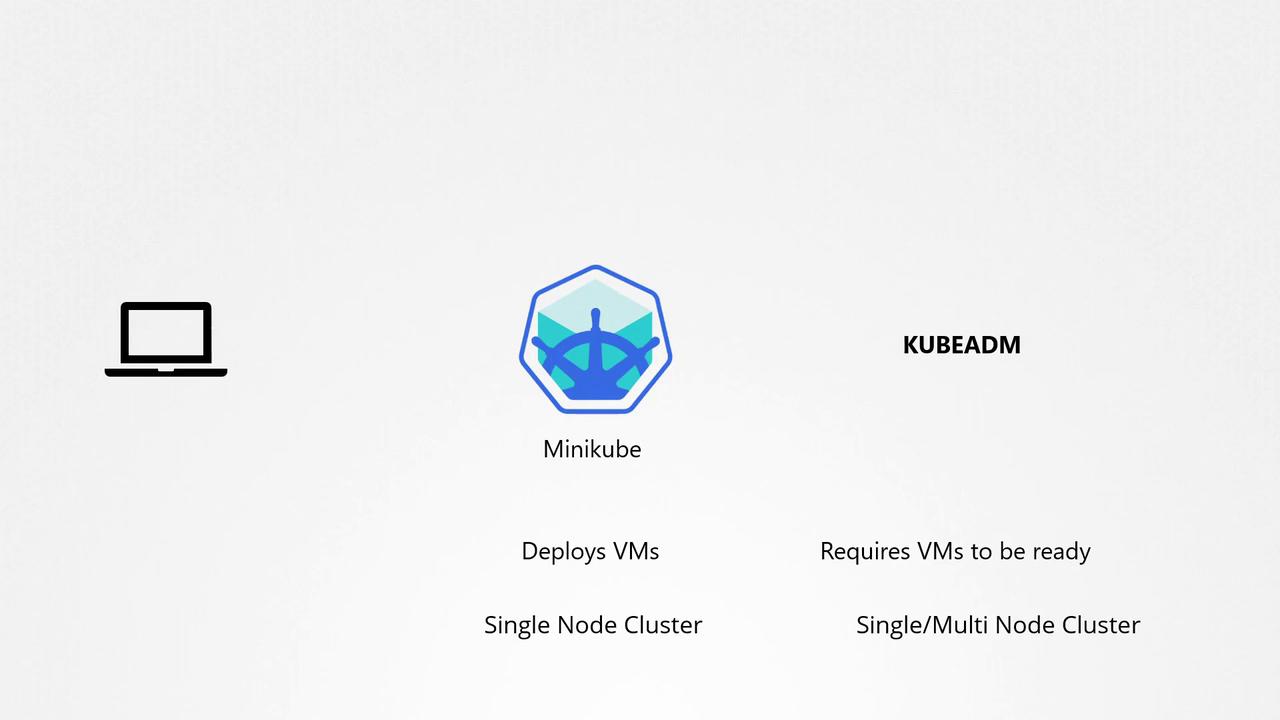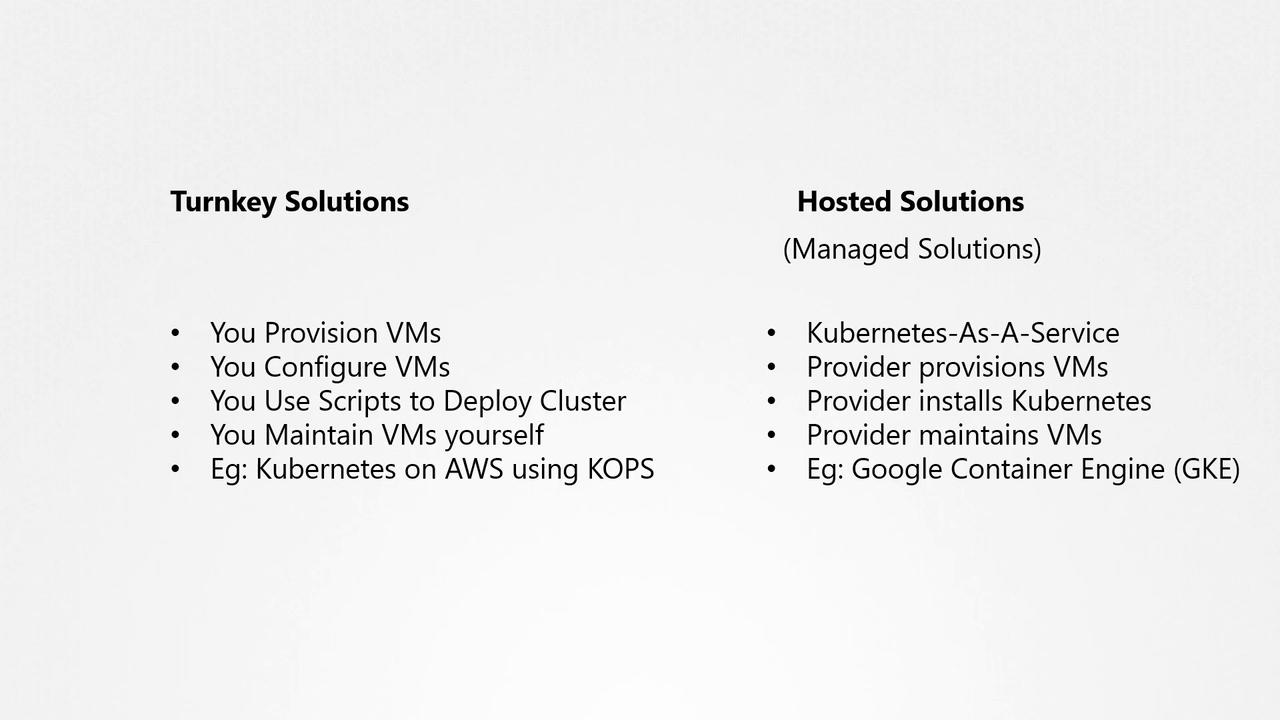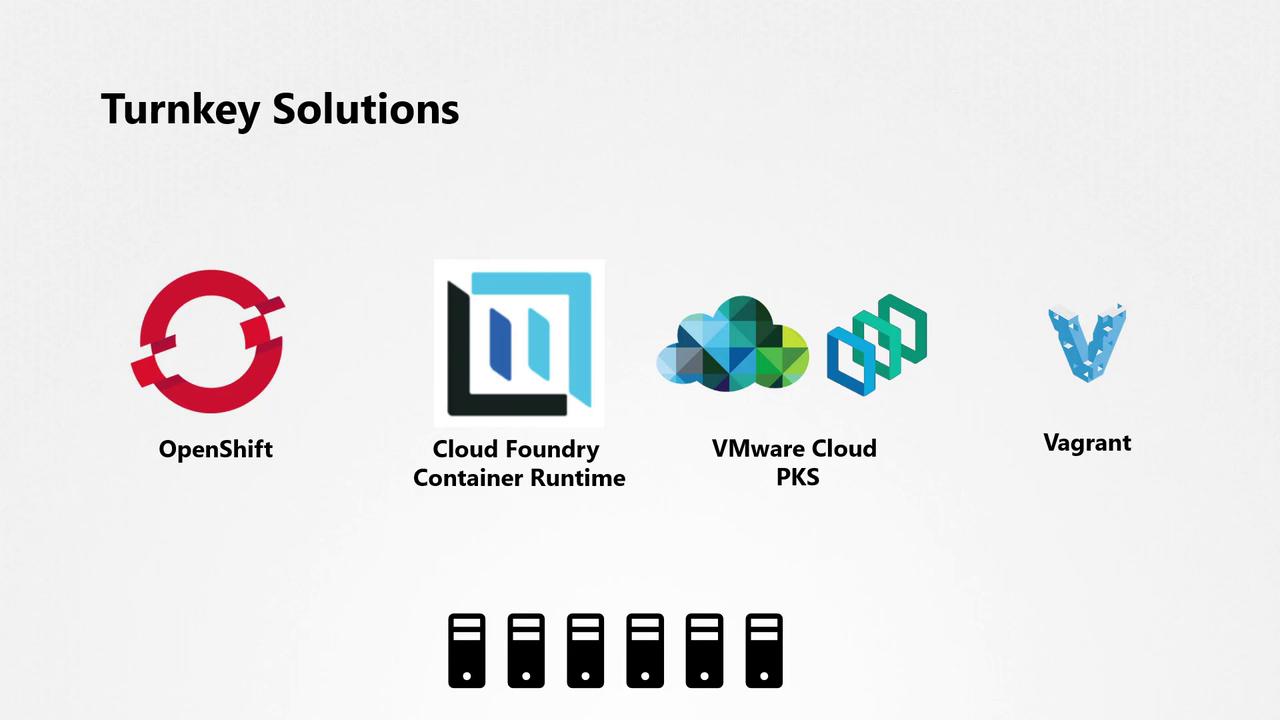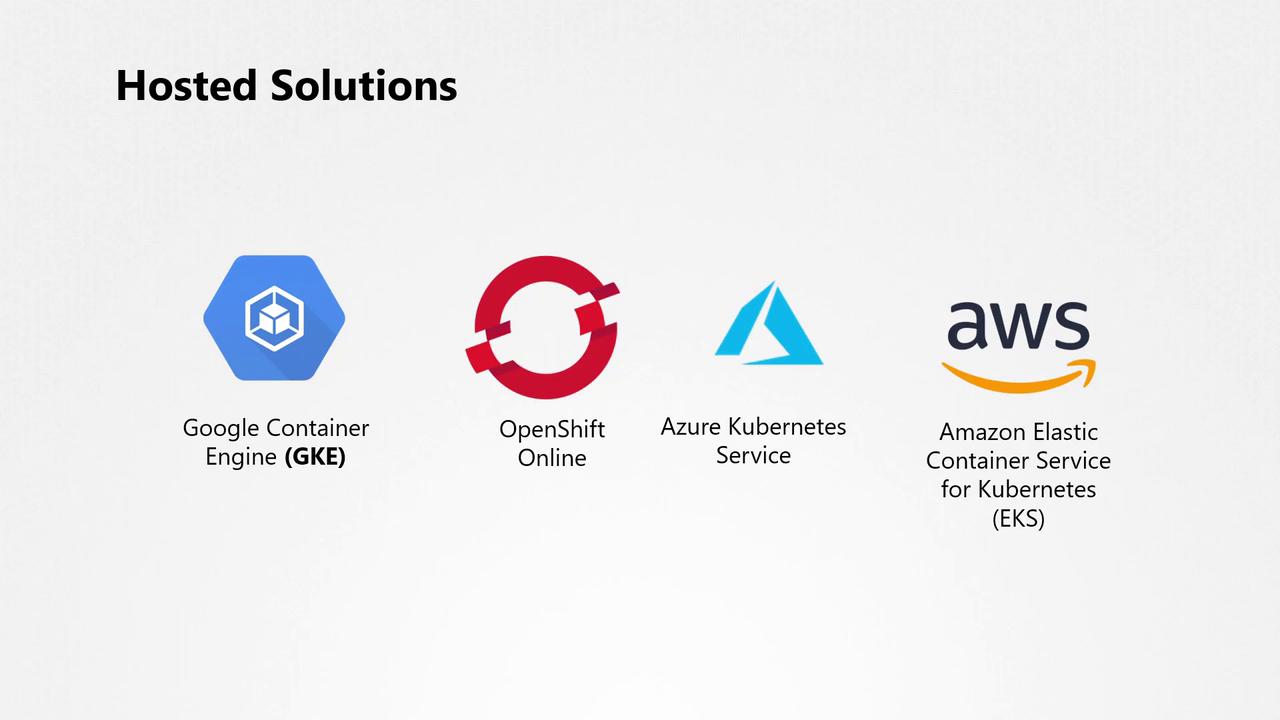CKA Certification Course - Certified Kubernetes Administrator
Design and Install a Kubernetes Cluster
Choosing Kubernetes Infrastructure
Welcome to this informative guide on selecting the right Kubernetes infrastructure for your needs. In this article, we explore various hosting options for Kubernetes clusters, examine their unique characteristics, and provide insights into both local and production deployments. Whether you’re new to Kubernetes or looking to expand your production environment, this guide will help you make an informed decision.
Kubernetes can be deployed on numerous platforms—from your local machine or laptop to both physical and virtual servers hosted on-premises or in the cloud. Your choice will depend on your technical requirements, cloud ecosystem compatibility, and the type of applications you plan to run.
Deploying Kubernetes on a Local Machine
For local development or testing purposes, several setup strategies are available. On a supported Linux system, you can install the Kubernetes binaries manually to configure a local cluster. However, for beginners, this process may be challenging, and a more automated solution is generally preferred to simplify cluster setup.
On Windows, since native Kubernetes binaries are not available, you need to rely on virtualization platforms such as Hyper-V, VMware Workstation, or VirtualBox. Windows users typically create Linux virtual machines (VMs) to host Kubernetes. Although Kubernetes components can run as Docker containers on these VMs, they operate on minimal Linux operating systems provided by Hyper-V.
Local Deployment Solutions
Two popular local deployment methods include:
- Minikube: This tool deploys a single-node Kubernetes cluster effortlessly by creating and managing VMs with virtualization software like Oracle VirtualBox. Minikube automatically provisions the VM with the necessary configuration.
- Kubeadm: This tool can quickly bootstrap both single-node and multi-node clusters but requires that you have already provisioned the VMs beforehand.
Local Kubernetes deployments on laptops are ideal for learning, development, and testing scenarios.

Production Deployment Options
In production environments, Kubernetes clusters are typically deployed in private or public clouds. Production solutions fall into two main categories: turnkey solutions and hosted (or managed) solutions.
Turnkey Solutions
Turnkey solutions enable you to provision and configure Kubernetes clusters with automated tools or scripts. While these solutions automate the deployment process, you remain responsible for maintaining, patching, and upgrading the underlying VMs. For example, deploying a Kubernetes cluster on AWS using the KOPS tool automates much of the setup.
Note
Turnkey solutions require careful management of the underlying infrastructure, so ensure you monitor and update your VMs regularly.
Hosted Solutions
Hosted solutions provide Kubernetes as a service, where the provider manages the entire cluster infrastructure, including VM provisioning, maintenance, and configuration. This approach greatly simplifies the deployment process. For instance, Google Container Engine (GKE) lets you deploy a Kubernetes cluster in minutes with minimal manual intervention.

Turnkey Solutions: On-Premises Options
For on-premises deployments, several turnkey solutions are available:
- OpenShift: Powered by Red Hat, OpenShift is a robust Kubernetes platform that comes with additional management tools and a graphical user interface for resource management and CI/CD integration. Check out the OpenShift for Beginners course for an in-depth introduction.
- Cloud Foundry Container Runtime: An open-source project that uses the BOSH tool to deploy and manage highly available Kubernetes clusters.
- VMware Cloud PKS: An excellent option for leveraging an existing VMware environment to deploy Kubernetes.
- Vagrant: Provides scripts to deploy Kubernetes clusters across various cloud service providers.

These turnkey options simplify the setup and management of Kubernetes clusters within your organization, assuming that your virtual machines meet the required specifications. For additional certified solutions and best practices, refer to the Kubernetes Documentation.
Hosted Solutions: Cloud Offerings
Several cloud providers offer managed Kubernetes services, making it easier to run containerized applications without the overhead of managing the underlying infrastructure. Top hosted offerings include:
- Google Container Engine (GKE) on Google Cloud Platform.
- OpenShift Online from Red Hat, delivering a fully functional Kubernetes cluster.
- Azure Kubernetes Service (AKS) on Microsoft Azure.
- Amazon Elastic Container Service for Kubernetes (EKS) on AWS.
These services are designed to reduce operational complexity and support rapid scaling of applications.

Our Deployment Choice
For learning and lab environments—especially for those without access to a public cloud account—we opted for a local deployment using VirtualBox. According to our recent poll, the majority of our users prefer VirtualBox for their lab setups.
We deployed a local Kubernetes cluster from scratch by creating several VMs on VirtualBox. The design includes three nodes: one master and two worker nodes, all running on a single laptop.

Lab Setup Tip
When setting up your own lab using VirtualBox, ensure that your laptop meets the resource requirements for running multiple VMs efficiently.
This concludes our guide on choosing the right Kubernetes infrastructure. For further details on deployment options and best practices, please refer to additional documentation and trusted sources in the Kubernetes community.
For more in-depth reading:
Watch Video
Watch video content